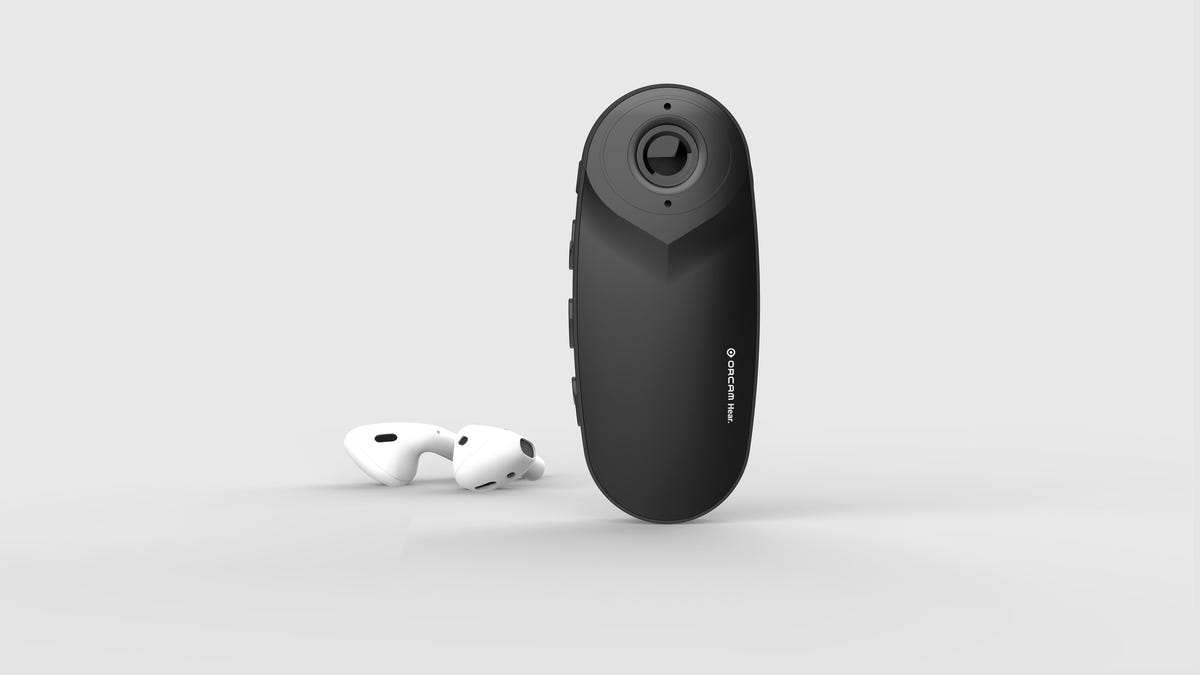OrCam Hear will amplify, beam other voices to your hearing aids
The device pairs with hearing aids via Bluetooth to single out the voice you want to hear.
I'm surrounded by four screens playing videos of people speaking loudly. One person sits in front of me, but it's hard to hear what he's saying. That is, until I put on a pair of headphones linked via Bluetooth to a small black device no bigger than a pen. Suddenly, the other voices become muted and I can hear him perfectly clear.
That shift is thanks to the little device, called OrCam Hear. It's one of the latest gadgets from OrCam, a startup that uses AI and machine learning to develop accessibility products that target not only hearing, but also vision and dyslexia. The company showed off the device this week at CES 2020 in Las Vegas.
OrCam Hear works by identifying and isolating someone's voice from a crowd and then beaming their speech to Bluetooth-enabled hearing aids. It uses lip reading and body gestures to figure out which voice you most need to hear in a given moment, and intuitively switches when there's someone else you want to listen to. When I tried the feature, OrCam Hear knew whose voice to pick up based on which direction I was facing.
Users drape the wireless device, which connects to a string, over their neck. It operates offline to ensure data privacy. The product is slated to come out later this year and a price hasn't yet been determined.
Nearly 500 million people globally have hearing loss, according to the World Health Organization. But just 20% of adults with hearing loss actually use a hearing aid, according to a report from CNET sister site CBS News. Thankfully, hearing devices are becoming smarter and more inconspicuous, but prices can still be prohibitively high. Some cost several thousands of dollars.
OrCam's other accessibility products include the MyEye 2, a small, wireless device for people with vision impairments. The device clips to the side of your glasses and reads printed and digital text aloud. It retails for $4,500 and is available in around 50 countries and 25 languages.
The company also has a handheld OrCam Read device to help people with reading difficulties like dyslexia. Users point the device at a block of text and hit a button, and it starts reading a page or section out loud. The wireless device is slated to launch in the US within months before rolling out in other countries. It'll retail for $1,500.


